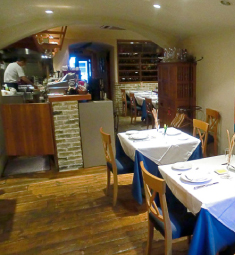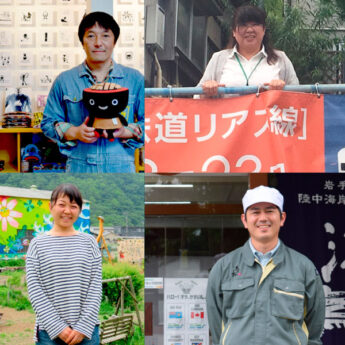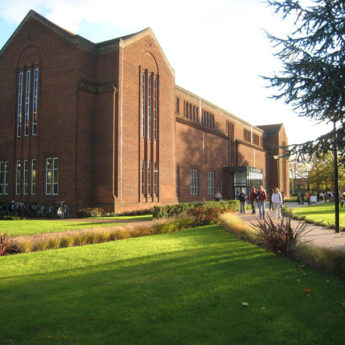
Berry Bros. & Rudd buyer Simon Field; (top) Shoko Davis, proprietor of Restaurant Davis
Restaurant Davis plays host to Berry Bros. & Rudd wine guru for evening of excellence
After a deft swish of the glass, Berry Bros. & Rudd buyer Simon Field allowed the dark brown liquid to linger briefly on his palate before declaring the 1970 Graham an “absolutely stupendous vintage port”.
And not one of the members fortunate enough to be taking part in the BCCJ’s first wine tasting session dedicated to the remarkable wines and spirits to be found on the Iberian Peninsula disagreed with that assessment.
Guests were warmly welcomed on 13 March in Takanawa at the comfortable and intimate Restaurant Davis, adorned with a unique wood-beamed entrance, natural timber floor, rustic brick walls and large windows—all spectacularly set off by strikingly colourful modern art. Field smoothly guided guests through no fewer than eight classic drinks, accompanied by equally excellent cuisine served up by the charming Shoko Davis and her talented team, comprising creative chef Takahiro Morimoto and knowledgeable, efficient servers.
Guests began with time-honoured Spanish tapas accompanied by a 2004 Gramona Gran Reserva III Lustrous Cava, aged for five years on cork and a blend of 70% Xarel-Lo grapes and 30% Macabeo.
“As recently as three years ago, Berry Bros. & Rudd did not stock a Cava, but the burgeoning number of tapas bars in the UK means that sales are now growing very fast”, said Field.
A former chartered accountant in the City, Field says he threw in those “misguided” years to join Berrys in 1998, and today is responsible for buying the company’s Spanish and fortified ranges, as well as wines from South America and England. His three favourite areas of responsibility, however, are the Rhone Valley, the Languedoc and Champagne.

Restaurant Davis in Takanawa: rustic and intimate
The first course—succulent olives, salami and Iberico ham—was complemented by a La Bota No. 27 Fino, Macharnudo Alto Valdespino, from Equipo Navazos. This sherry had benefitted from 11 years of fractional blending, but “still retained the freshness that we equate with the finest sherries”.
The tasty pan-fried squid stuffed with brandade—a delectable emulsion of salt cod and olive oil—fitted perfectly with the 2007 Rioja Blanco, from the Finca Allende, which is similar to a white Chateuneuf-du-Pape, and had come from 50-year-old vines outside the mediaeval village of Briones. Field pointed out the drink’s elements of lanolin, quince and the distinctive freshness and length on the palate.
“There has been a resurgence in interest in riojas, both old and new”, he warned. “And there are more and more takers in London which means the stocks of older wines are being depleted”.
The tender chicken fillet and colourful rape flower salad served with crispy scampi was accompanied by a 1987 Vina Tondonia Blanco Gran Reserva, from the Bodegas R. Lopez de Heredia. This was followed by a roast rack of superb New Zealand lamb and a hearty stew with perfectly cooked potatoes.
The meat dish came with two somewhat similar wines: a younger 2005 Contino Rioja, Reserva, that Field described as having tight tannins and being “youthful and complete on the palate”; and a more heady, rich and fruity Vina Ardanza, Reserva La Rioja Alta.
After a brief respite, the dessert—a spectacular crema catalana with orange compote—came with an Emilin Moscatel, Solera Reserva, Emilio Lustau. Medium-full bodied, the 17%-alcohol sherry is one of the relatively few drinks that make use of the moscatel grape and, as the sugar is not fermented out, the sherry retains an impressive 195 grams of sugar, making it remarkably sweet on the palate.
Scrumptious dried figs and rich molasses provide the lower notes, according to Field, while curranty and orangey elements act as the perfect complement.
The delightful evening closed with a final course of assorted cheeses—including a delicious Shropshire Blue—and the 1970 Graham Vintage Port that so impressed Field, a Master of Wine since 2002.






